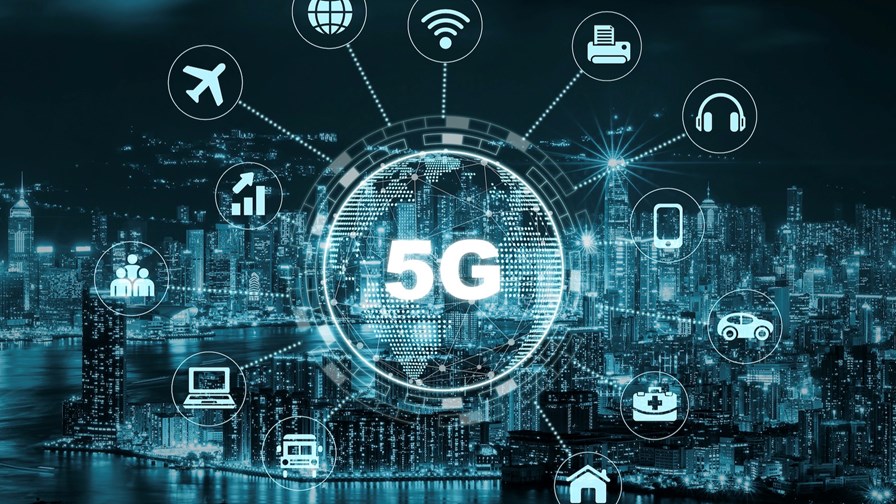
- All three hyperscalers have ambitions to play a role in telecoms in general and 5G in particular
- None more so than Microsoft, which has just made it known that Azure is going to start selling network transport services to 5G network operators
- Who said the hyperscale players weren’t gunning for a telco role?
The ambitions of Microsoft Azure and the other two main hyperscalers to become telco enablers in a 5G and increasingly cloud-native world has made many in the telecoms industry slightly nervous. But now acceptance may be breaking out. In their increasing reliance on cloud-native virtualisation for 5G, telcos have essentially handed their technical future over to cloud technologists in general and the hyperscalers in particular, and may be fast coming to terms with that fact.
All three hyperscalers have ambitions to play a role. None more so than Microsoft. Although it’s been a gradual process, the realisation that Microsoft was drawing some sort of bead on the telecoms industry can arguably be dated to one year ago when, in September 2020, it announced that it was building a ‘carrier-grade cloud’ to help carrier partners to unlock the power of 5G, That same month it announced (out of the blue) the purchase of Affirmed Networks and Metaswitch Networks. This seemed to signal that Microsoft was going to do more than lend a bit of assistance to its telco customers, it planned to be in there with serious technical intent as both companies had deep expertise around ‘cloud native’ technology and the virtualisation of the core network especially.
The move set the telecoms industry (still pretty-much locked down at that point) a-buzz with excitement. “Is Microsoft going to try and compete head to head with the telcos? And if it is, will it succeed or crash and burn?”
Azure is arguably in a good position to provide cloud services for 5G and Azure executives can reel off an impressive list of statistics to support that claim. Azure, they say, is already poised with the necessary connections and operator adjacencies to do a good job. It has 20,000 peering connections globally, a stat which translates as Azure having direct connectivity within 25 miles of 85 per cent of the world’s GDP (note: we’re talking 25 miles range to the cities and industrial centres here, linking up the world’s productive capacity is what this is all about). Other marks and measures include 170 points of presence; 200 operators connectiving with Azure through its ‘ExpressRoute’ service which enables enterprises and partners to link to Azure privately.
Microsoft itself said that the technology from Affirmed and Metaswitch would provide services for Mobile Packet Core, Voice, and Interconnect services as it constructed its ‘carrier grade cloud’.
Fast forward and the next major bombshell at the end of June this year, was the announcement that AT&T and Azure were essentially going to lock each other up in a clinch.
Microsoft would take over AT&T’s cloud network, glue it to Azure’s hybrid cloud and take over the operations, all the while transforming the network with new applications and the ambition to sell core network functionality to other operators. Microsoft also gets to acquire AT&T’s Network Cloud platform technology and its engineering and lifecycle management software.
But the really stunning part of that deal was the revelation that AT&T was handing over the development of its core network, its crown jewels if you will, to another technology company, and a hyperscaler at that!
There’s been a cascade of change in the past year, especially if we look at the Microsoft moves, but it seems to me that the essential nature of the telco is pretty-much preserved by the Azure/AT&T arrangement amidst the onrush of the hyperscalers partnering up with telcos and the disquiet generated. There is no takeover in the sense that Azure wants to start running its own telco and squeezing AT&T and other telcos out of the picture. As Microsoft might say (in fact I think it has) it’s intention is to take on the needlessly distracting network technical detail and risk to allow AT&T, in this case, to concentrate on the service layer and its customers, leaving the techy stuff to Microsoft. It has no ambition to take on tens of millions of phone customers - that’s a whole art in itself, and not a particularly profitable one any more either.
So the most important announcement, to my mind with the whole transformation process, was that Microsoft is going to take up a wholesale position on network services for 5G operators by selling advanced, high quality transmission and routing services on a global basis. That pretty much escaped notice where once it would have created a major stir.
After all, if telcos do anything, they run networks and sell capacity and services to use them, but now it looks likely that cloud-based service providers can do all that and more.
Email Newsletters
Sign up to receive TelecomTV's top news and videos, plus exclusive subscriber-only content direct to your inbox.




